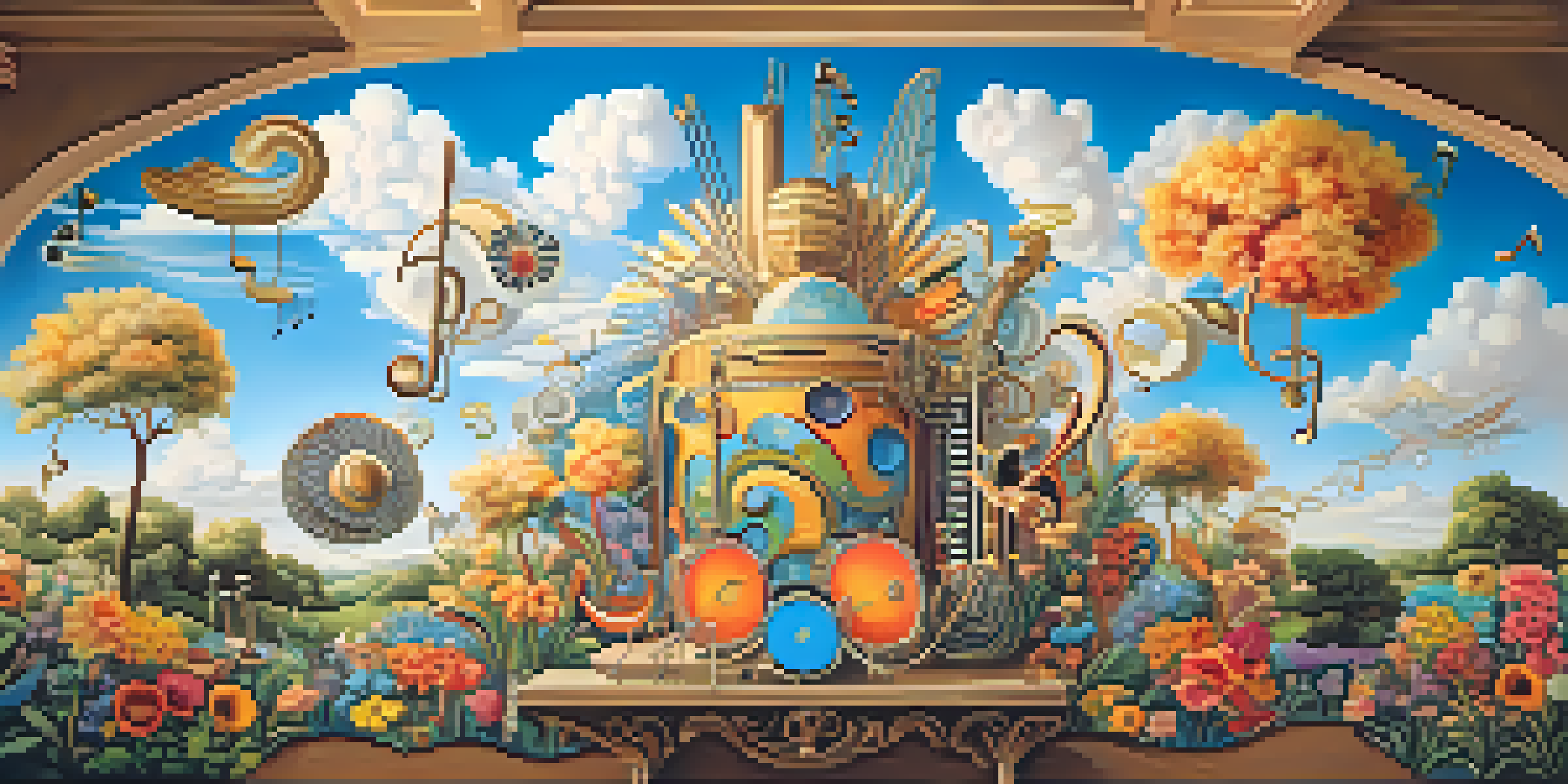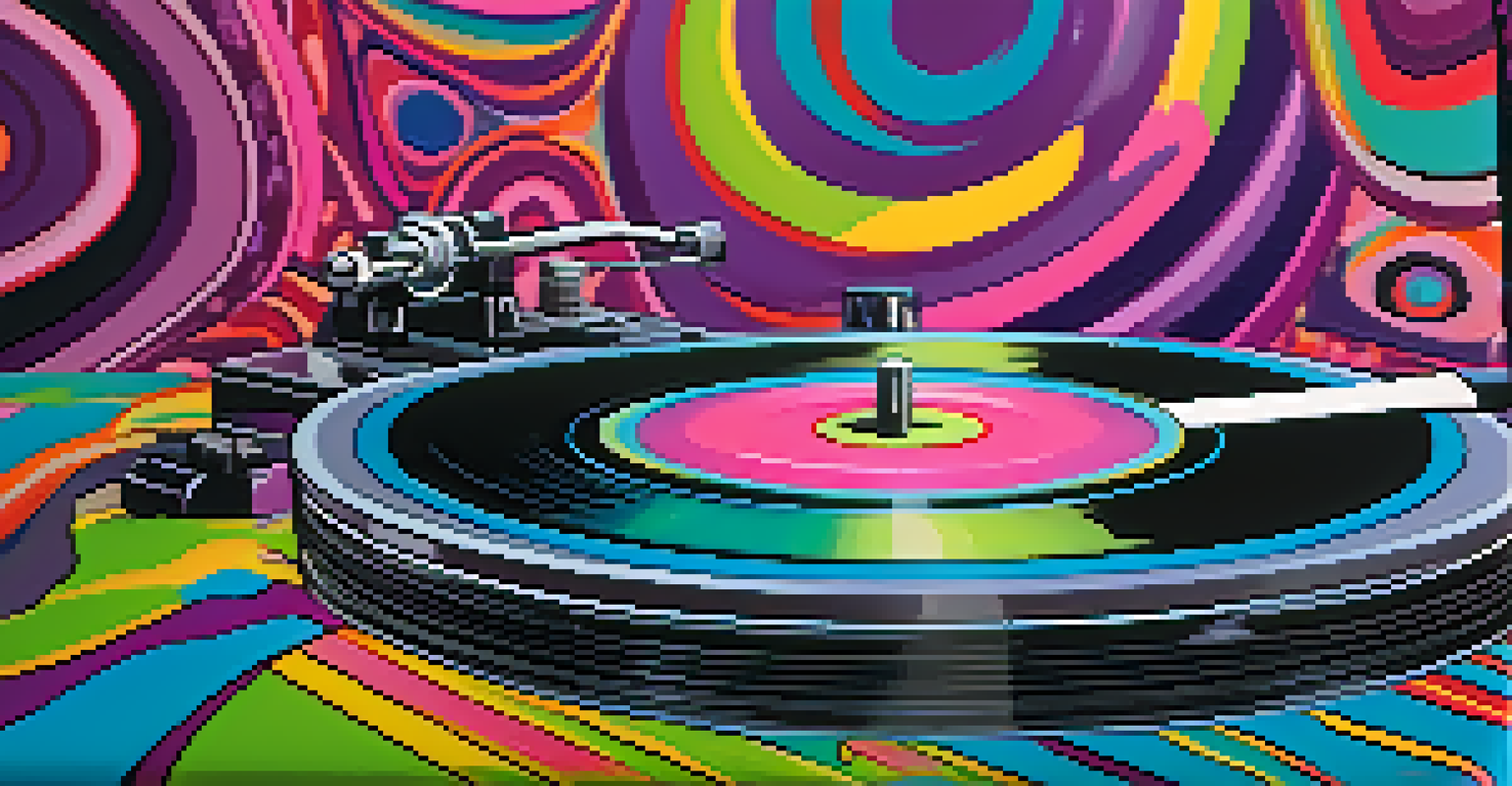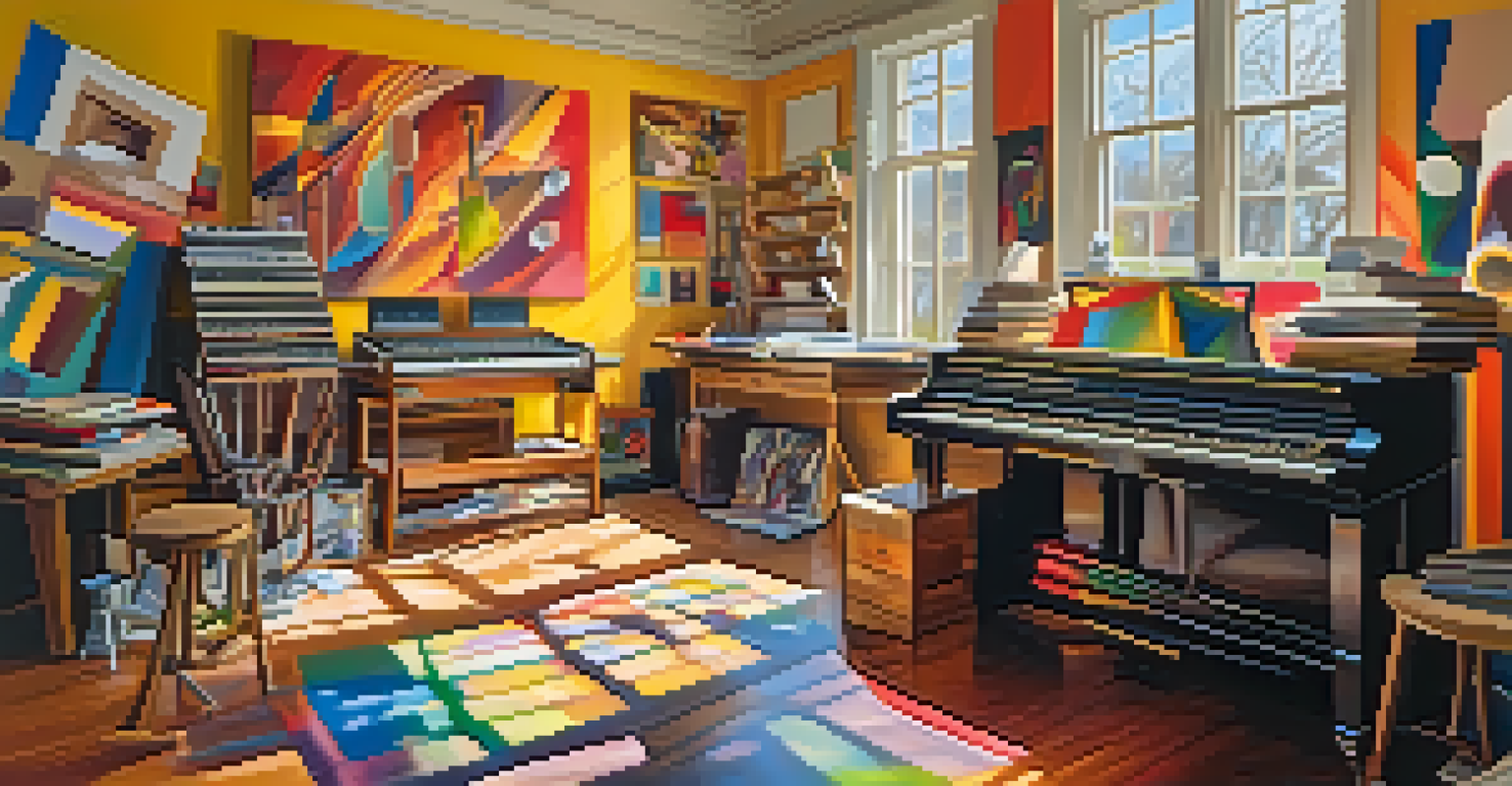The Influence of Hallucinogens on Music Composition

Understanding Hallucinogens: A Brief Overview
Hallucinogens are substances that alter perception, mood, and various cognitive processes. Common examples include LSD, psilocybin (found in magic mushrooms), and mescaline. These compounds can induce vivid sensory experiences, which some artists believe enhance creativity and artistic expression.
Psychedelics are a way of providing a glimpse into the nature of consciousness.
For musicians, the effects of hallucinogens can lead to profound shifts in how they perceive sound and structure their compositions. Many artists report experiencing heightened emotional responses and new perspectives on music, allowing them to explore uncharted territories in their creative processes.
However, it's essential to approach this topic with caution. While some claim that hallucinogens have positively influenced their work, others may experience negative side effects, such as anxiety or paranoia. Understanding the dual nature of these substances is crucial in discussing their impact on music.
Historical Context: Hallucinogens and Music
The relationship between hallucinogens and music dates back to ancient cultures, where shamans used psychedelic plants in rituals to connect with the divine. In the 1960s, this connection became more mainstream, especially during the counterculture movement when artists like The Beatles and Jimi Hendrix openly experimented with these substances.

During this era, music became a vehicle for exploring consciousness, and many iconic tracks were created under the influence of hallucinogens. Songs like 'Lucy in the Sky with Diamonds' are often cited as examples of how psychedelic experiences can translate into music, merging surreal imagery with innovative soundscapes.
Hallucinogens Influence Creativity
Hallucinogens can alter perception and cognitive processes, potentially enhancing creativity and artistic expression for some musicians.
This historical context highlights how hallucinogens have been intertwined with musical innovation across various genres. From rock to electronic music, artists have been inspired by altered states of consciousness, pushing the boundaries of creativity in their compositions.
The Creative Process: Hallucinogens as Catalysts
Many musicians describe the experience of using hallucinogens as a spark that ignites their creativity. The altered states of consciousness can lead to unique ideas and unconventional approaches to songwriting and composition. This might explain why some artists feel more liberated to experiment with sounds and structures they wouldn't typically consider.
The music is the journey, and the hallucinogens can be the vehicle that takes you there.
For instance, hallucinogens can enhance visual and auditory synesthesia, where sounds evoke visual imagery. This phenomenon can inspire musicians to create pieces that resonate on multiple sensory levels, resulting in deeply immersive experiences for listeners.
However, it's worth noting that not every artist finds success with hallucinogens. While some thrive in these altered states, others may struggle to translate the experience into tangible musical outcomes. This variance suggests that the influence of hallucinogens on music composition is highly subjective.
Influential Artists: Hallucinogens in Their Work
Numerous artists have openly discussed the role of hallucinogens in their creative processes. For example, the late Jim Morrison of The Doors often attributed his lyrical depth and surreal imagery to his psychedelic experiences. His work pushed the boundaries of rock music, blending poetry and profound themes that resonated with the counterculture.
Similarly, the band Pink Floyd is well-known for their psychedelic sound and concept albums, such as 'The Piper at the Gates of Dawn.' Many of their tracks reflect the influence of hallucinogens, creating a sonic landscape that transports listeners to other realms.
Historical Ties to Music
The relationship between hallucinogens and music dates back to ancient cultures and was popularized during the 1960s counterculture movement.
These artists illustrate how hallucinogens can shape not just individual songs but entire musical movements. Their legacies continue to inspire new generations of musicians who seek to explore the creative possibilities that these substances may offer.
The Science Behind Hallucinogens and Creativity
Recent studies have begun to explore the connection between hallucinogens and creativity from a scientific perspective. Research suggests that these substances may temporarily alter neural pathways, enabling more flexible thinking and enhanced problem-solving skills. This could explain why some artists report breakthrough moments while under their influence.
One notable study found that participants who took psilocybin showed increased connectivity in brain regions associated with creativity. This heightened connectivity may allow individuals to make unique associations between seemingly unrelated concepts, a vital component of the artistic process.
While these findings are promising, it's essential to remember that the relationship between hallucinogens and creativity is complex. Not all creative individuals will respond positively to these substances, and the effects can vary widely depending on the individual and the context of use.
Risks and Considerations: A Balanced View
While hallucinogens can inspire creativity, they also come with potential risks. Some individuals may experience adverse effects, such as anxiety, paranoia, or disorientation, which can negatively impact their creative process. It’s crucial for artists to weigh these risks against the potential benefits before experimenting with these substances.
Moreover, legal implications must be considered. Many hallucinogens are classified as illegal substances in various jurisdictions, which can lead to serious consequences for users. Artists must navigate their creative exploration while being aware of the legal landscape surrounding these substances.
Risks of Hallucinogen Use
While hallucinogens can inspire creativity, they also carry risks such as anxiety and legal implications that artists must consider.
Ultimately, a balanced view encourages musicians to approach hallucinogens with caution and respect. While they can serve as tools for creativity, they should not be seen as essential for artistic expression. Artists can explore myriad ways to tap into their creativity without relying on these substances.
Conclusion: The Ongoing Dialogue in Music and Psychedelics
The dialogue surrounding hallucinogens and music composition continues to evolve as more artists and researchers explore this intricate relationship. While hallucinogens have undeniably influenced numerous musicians and genres, the conversation also highlights the importance of individual experiences and the varied paths to creativity.
As we reflect on this topic, it’s essential to recognize that creativity can stem from various sources, whether through hallucinogens, personal experiences, or other forms of inspiration. Each artist has a unique journey that shapes their work, and understanding this diversity enriches our appreciation of music.

In the end, the influence of hallucinogens on music composition invites us to consider broader questions about creativity, perception, and the human experience. Whether through the lens of science or personal narratives, this exploration opens doors to new possibilities in the world of music.